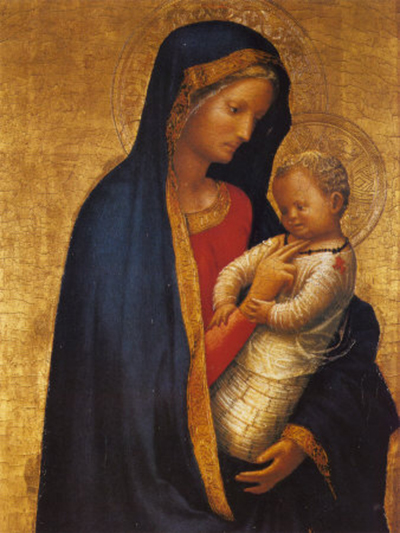The artwork Madonna Casini dates back to 1426-1427 as the creator, artist Masaccio, renders the biblical story of Mother Mary.
The unique and elegant portrayal of Madonna and child demonstrates a innovative approach to showcasing classic references. The masterful Renaissance painter used a tempera technique to paint the scene on a wooden panel.
The interesting element showcased through the artwork is the serious facial expression painted across Mother MaryÕs face. Her purity and love is not highlighted, yet instead a concerned expression seizes her being as she analyses her child. It is unknown why the artist had decided to showcase the woman in such a fierce tone, yet perhaps it is to illustrate the fate of her son.
Mary's sharp gaze may perhaps symbolize heartbreak in witnessing her only begotten son soon be hung on the cross as he dies for the populations sins. MaryÕs cheerless expression illustrates her inner being already sacrificing her son for other, even as he is a child.
Mary places her two fingers beneath the child's chin, as if she is either tickling or blessing him. The child gently turns his face downward as he looks towards the floor, with an expressionless face.
Masaccio had used an outstanding technique to illustrate the artwork as the two figures are highlighted with a vivid background. The artist had commonly used bright gold metallic colours within his artwork as they were usually used as panels that with placed within churches. The textured gold background seems to be resembling a textile much rather than paint. Artwork by Masaccio with a similar feel includes his golden paintings Crucifixion and Madonna of Humanity.
The other captivating element of the artwork is the long brush stroke used to display the details of the blue fabric Mary is clothed in. The rich blue intensifies the artwork as its deep colour contrasts the rich gold. These long brush strokes continue to cover the babyÕs body as the artist uses them to create the folds and wrinkles within the painting.
The child holds a cross around his neck covered in black beads with a red coloured crucifix. This element suggests to the viewer his inevitable death to come in the future. The child's blond hair is painted through soft curls outlining his rounded head.
Mary's hair is covered by her rich blue robe as it falls upon her face. The blue fabric is accentuated by a deep gold colour, matching with the background of the artwork.
As the child clings onto his mothers arm, the viewer is seized with an array of emotions as they hold the understanding of what will eventually occur through the crucifixion of the child. These religious symbolisms hold as a prominent component of MasaccioÕs work as the artist displayed these scenes throughout his artwork.




